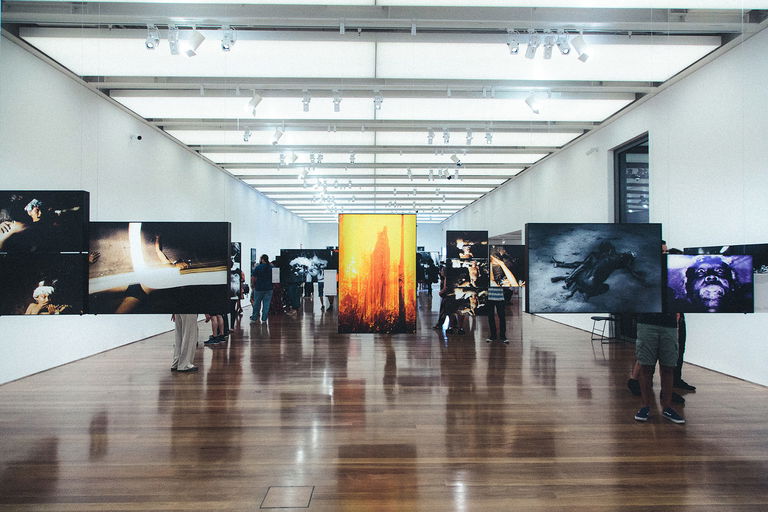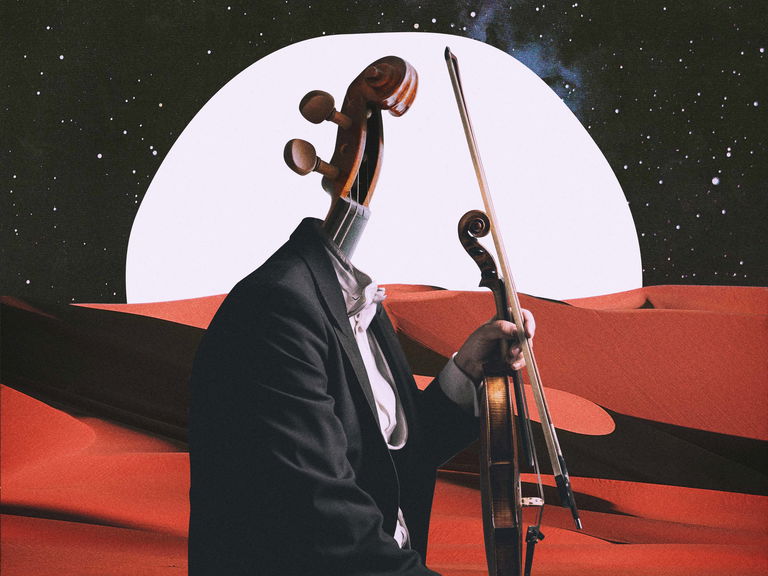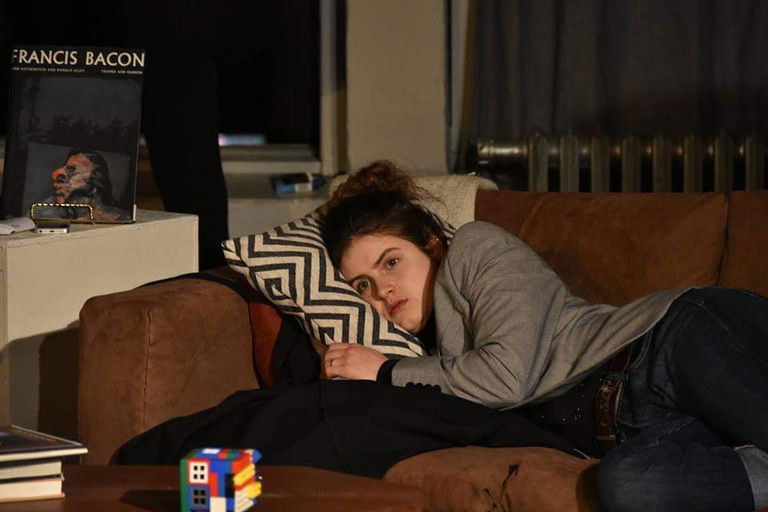
Reimagine—How the Disability Community Accesses the Arts
Rachel Marks for Culture Days
Jun 29, 2021
“Striving for accessibility isn’t as hard as we’ve been made to believe it is”, Erin Ball, Circus Artist and Kingston Circus Arts founder, shares with me on our Zoom call. I first met Erin when I worked for an autism organization—she taught classes for the kids involved in our programs, and all the kids loved them and her, and it’s not hard to figure out why. As an accomplished Circus Artist, Erin brings excitement, professionalism, and joy to every class and workshop she leads. As a Disabled Circus Artist, she also brings understanding. It’s always great to catch-up with Erin, and I was especially interested in speaking with her about our current arts scene—how had it impacted her work, her ability to access the work of others, the ability of disabled audiences to access the arts? These are the questions that are on my mind. And you know what? They should be on the mind of every arts institution, practitioner, and lover in this country.

Credits:
Photo: Bon Evans Photography
Director: Joel Baker
Artist: Erin Ball
From the performance InterTwined: Commissioned by the NAC English Theatre for “The Green Rooms: The Earth is Watching…Let’s Act” and was presented as part of the 2020 FOLDA Festival.
Thanks to the “pivot” made necessary by COVID we’ve seen a massive and rapid change in the delivery of arts programs, shows, and presentations. In the “before times” if you couldn’t get to a theatre or arts space to see a show, you’d be out of luck. Now all you need is an internet connection and the love of live arts and you can participate in pretty much anything. Are we on the cusp of a new style of arts presentation? After we reopen will there still be the option to view shows, attend concerts and plays, and experience culture virtually? Will we see a new hybrid culture scene? Kat Germain, Audio Describer, Relaxed Performance Practitioner and Disability Justice Advocate, hopes so. “Hybrid performances”, says Kat, “remove a lot of barriers for a lot of people”. Kat has provided Audio Description for many theatres and arts organizations across the country, mostly in large cities, but also in places the size of Kingston, Guelph, and Peterborough. So I find myself wondering, if small companies in small towns know there is a need for inclusion (Kat’s preferred term to accessibility), why aren’t more places offering it? Does it go back to Erin’s thoughts about accessibility (inclusion) not being as difficult as we’ve been led to believe? And why is it that we think it is so hard to achieve?
As a Relaxed Performance Consultant, I help arts organizations to welcome members of the Disability Community to performances and spaces. And yes, a lot of the organizations I consult for are larger companies whose donors may have deeper pockets, but the people I work with aren’t just ticking boxes - they want to make a real change in the arts scene in Canada. They want to re-imagine how to invite the Disability Community to participate in their work.
I am often approached by smaller companies or individual artists asking how to make their work more inclusive, and honestly, small steps can be taken to begin that process. Steps that don’t cost a lot, if anything at all. Erin told me that the Kingston Arts Council is “…making an effort to describe their photos (on social media)” and, she shares, people are describing themselves in meetings. I agree. I’ve noticed this myself over the last year. Prior to COVID the only meetings I attended where people gave visual descriptions of themselves (for members of the Blind and Low Vision communities) were those that were disability led. Now, it’s more common—at least in the arts. Emily Maxwell, Founder & Co-Director of Toronto’s The Disability Collective, echoes these thoughts. “It can sound like a lot and daunting, but small steps can be made until it becomes natural”.
It’s true, and something I always tell the people I work with. Start small, do what you can, but at the same time be honest with your community about what you are able to offer as well as what you aren’t. So if you can keep the house lights at 30% and lower sound cues to 90 decibels, but can’t afford an ASL/LSQ interpreter or Audio Description, tell your audiences. Manage their expectations so that they know exactly what they can access and what they can’t. Give them all the information they need prior to purchasing a ticket so that they can fully engage and participate, or know that your limitations won’t allow that at this time.

Does inclusion and accessibility stop at front of house? It shouldn’t. What are we doing to “showcase human beings in all of their diverse beauty”— a gorgeous thought by Nathan Sartore, Co-Director of The Disability Collective, a new company out of Toronto that promotes and showcases art by Disabled Artists. Art should “look like what people look like”, Nathan expands. “And real people backstage too,” Emily adds. Yes! As a former Stage Manager with on-again off-again mobility issues, I completely agree. How often have I arrived at a venue to find the booth inaccessible? More times than I’d like to admit. And what about stage steps? How do artists who use mobility devices access a stage that doesn’t have an elevator or ramp? Laura Cusack, Founder and Executive Director of the Hummingbird Hub in downtown, historical Stouffville, found a way. “Culture is the heart of a community. To get a community to bond, and make an impact as we grow we need to focus on the cultural arts”. And that focus is brought about by their Accessible Open Mic Night. Most open mics, as we know, take place in pubs and bars that usually have stairs or aren’t very inclusive. So how did a community centre in a century-old building become the centre for inclusivity in Stouffville? By engaging with their audience and community—a thought echoed by each of the people I spoke with.
Ask your community what they need in order to participate. Engage in dialogue with the Disability Community and listen, without preconceived ideas, but with an open heart and mind, and a desire to breakdown barriers and include everyone.
Cassie-Hope Aubin, Deaf Theatre Artist, shares “We see diversity happening, which is amazing, but disability is often excluded or the at the bottom of the list.” As a musical theatre performer Cassie-Hope has “been in shows that weren’t accessible, so I wouldn’t have even been able to see my own show.”

It’s time for a change. Time to reimagine how we present, access, and create art. It’s time to relax not only performances, but also processes. Reach out to the d/Deaf and Disability communities, ask what they need to be included both onstage and off, engage disabled creatives, bring their voices to the stage and share their stories in open and honest ways. This is an exciting time of reflection. We are being allowed time to think about how we want to move forward—and it’s time to include every voice in that discussion.
This article is part of a special blog series featuring writers and creatives from across Canada (and beyond!) with stories that both highlight and celebrate Culture Days’ 2021 theme, RE:IMAGINE. Explore more stories below.
- The Road Less Travelled: Three artists reimagine success and career by Linh S. Nguyễn
- Arts in Motion by Aaron Rothermund
- Reimagining Public Spaces: The Share-It-Square in Portland, Oregon by Laura Puttkamer
- Refresh: How a Year on Instagram Redefined Artistic Communities by Eva Morrison
- RE:PURPOSE by Mike Green
- Recalibrating: A Look at Opera InReach by Anya Wassenberg
- Reimagining Community and the Workplace of Theatre by Natércia Napoleão
- Helm Studios flips the for-profit music model to empower artists by Aly Laube
- Curating INUA, Canada’s newest Inuit art exhibit by Carolyn B. Heller
- When Less is More: What Theatre Can Learn From a Year in Slow Motion by Megan Hunt
- RE:ORCHESTRATING Our Future: Advancing Sustainable Development Through The Arts by Ryan Elliot Drew
- RE:DEFINING Normal: A Prescription for a Canadian Cultural Landscape in Recovery by Valerie Sing Turner
- Empathy Machines?: Exploring the Relationship between Immersive Art Technologies and Feeling by Jozef Spiteri and Sunita Nigam
- La poésie pour vivre différemment la pandémie par Jérôme Melançon





